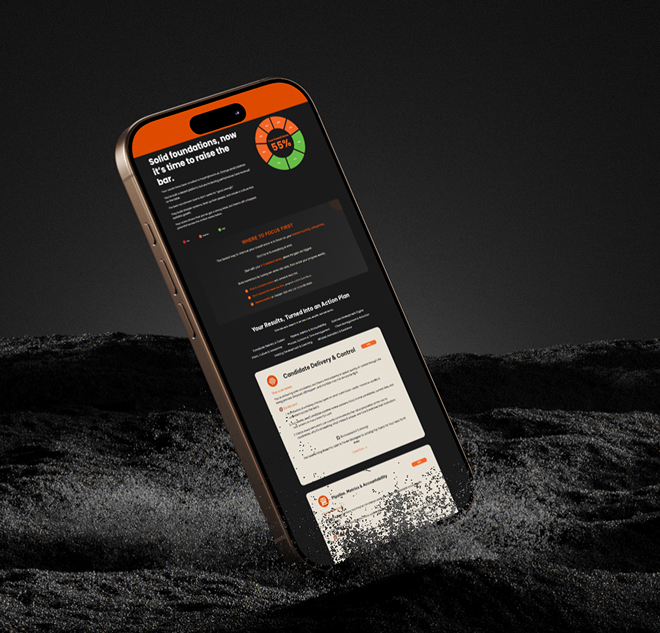Mindset + Burnout | How can you spot burnout in your teams?
The recruitment market has changed rapidly over the past couple of months. And, as we come to the end of Q4 – a lot of us are (understandably) going to feel pretty exhausted.
That, coupled with Christmas around the corner – can lead to a lack of motivation and potential burnout.
Long-term subscribers of this newsletter will know that we’ve covered burnout and mental health many times before, but this time I really wanted to focus on the signs of spotting burnout in your team and how to tackle it.
What are the tell-tale signs of burnout?
Self-doubt: When someone’s confidence is knocked, and they’re stressed – self-doubt starts to creep in.
Although this isn’t the only “symptom” of burnout, it can be an obvious indicator of the early signs that someone is battling with themselves internally.
Procrastination: With self-doubt comes doubting the ability to complete simple (and complex) tasks.
This leads to procrastination, either due to the fear of getting something wrong or the fear of tackling an overflowing workload.
Dip in performance (or a continuous downturn in performance): Who remember’s when my podcast was called The Recruitment Rollercoaster? – That’s because it is.
There will be continuous ups and downs no matter what. But, sudden dips in performance or a steady decline in deal flow, pipeline, and daily activity can show that someone is struggling.
Irritable and/or overwhelmed: Behavioural changes are a great way to spot stress and/or burnout.
If the individual in your team is all of sudden appearing to be overwhelmed or irritable, this can be a tell-tale sign.
Unable to complete simple tasks: Is their inbox overflowing? Are they unable to complete simple follow-up calls or standard admin tasks that the “average” recruiter could complete fairly quickly?
Spending more time working from home/withdrawing from social activities at work: Although the majority of agencies now have a hybrid or completely remote models, one of the obvious signs of burnout is a behavioural change toward socialising at work.
Whether it’s end-of-the-week drinks or team lunches, if you notice a change in behaviour or someone who was once extroverted suddenly becoming introverted, this is an obvious sign.
Now, what are the not-so-obvious signs?
Overworking/too much overtime: In recruitment, we’re all used to working long hours. For those who are in the first year of their career – this will resonate with you all too well!
But, there’s a big difference between working longer hours because you have the motivation and desire to do so, and working longer hours because you can’t focus during the day or get your workload done in a reasonable time.
Sure – the odd late night is something we’ve all done, but when it becomes a daily thing, this is a problem.
This can sometimes be hard to spot as a manager because of the culture in recruitment, and can cause severe burnout much quicker.
Weight change, tired eyes: Although you should never comment on someone’s appearance – as a leader, you should keep a mental note of this.
Some people are great at hiding their stress and burnout, so look out for things such as a sudden change in weight, how their eyes appear in the office or on zoom, and also how they are dressing.
This sounds, in theory, invasive – but the bottom line is you must be observant to the smaller, less obvious changes and ensure that you’re looking after your team.
Not turning on their camera as regularly as they used to: We are living in a digital world, where hybrid working, remote working, and being behind a screen has become the norm.
And, something else that has become the norm is less “rules” around camera etiquette.
Now, this is great – no one should be forced to put on their camera.
But, if you’re operating a remote recruitment team it’s crucial that you have some level of FaceTime with your team members so you can look out for burnout.
Recruitment and burnout can often go hand in hand – but it doesn’t have to be this way
Burnout is so complex – especially in the recruitment world where the “old school” culture really is to suck it up and get on with it.
But, it doesn’t have to be this way.
So many of us have been burnt out time and time again over the past couple of years – and this time, we need to try to focus on creating a culture and open conversation between leaders and their team members about burnout.
Beyond the top-line things such as checking workload and asking “are you stressed?” – what else are you doing?
Here are some ideas
- Make taking annual leave mandatory
- Always make time for 1-2-1’s that are centred around how someone is feeling rather than how someone is performing
- Talk about burnout regularly to encourage open communication
- Set boundaries about working hours and don’t encourage “hustle culture”


